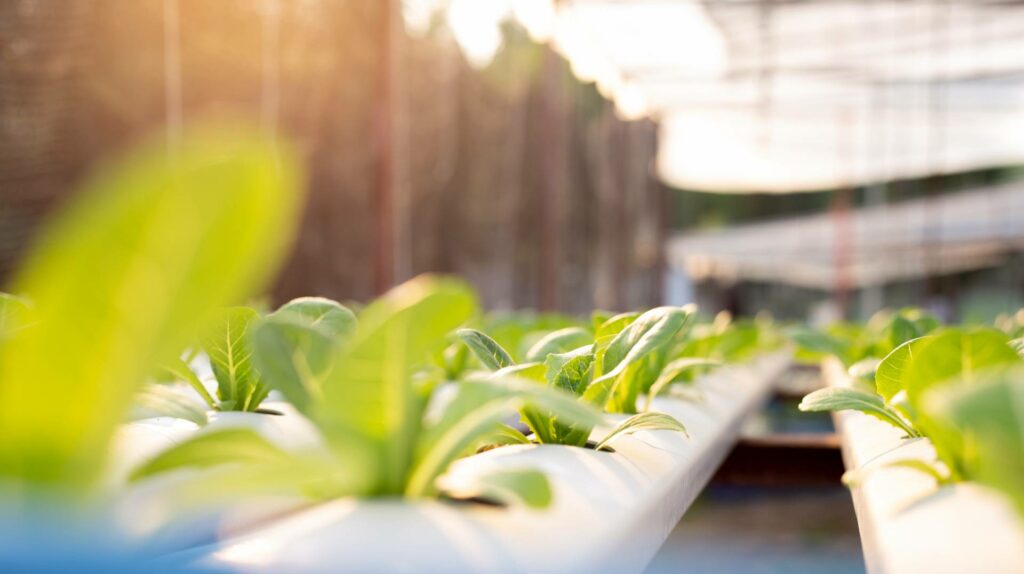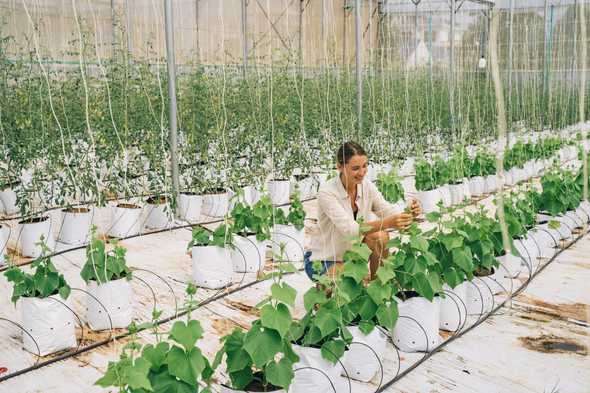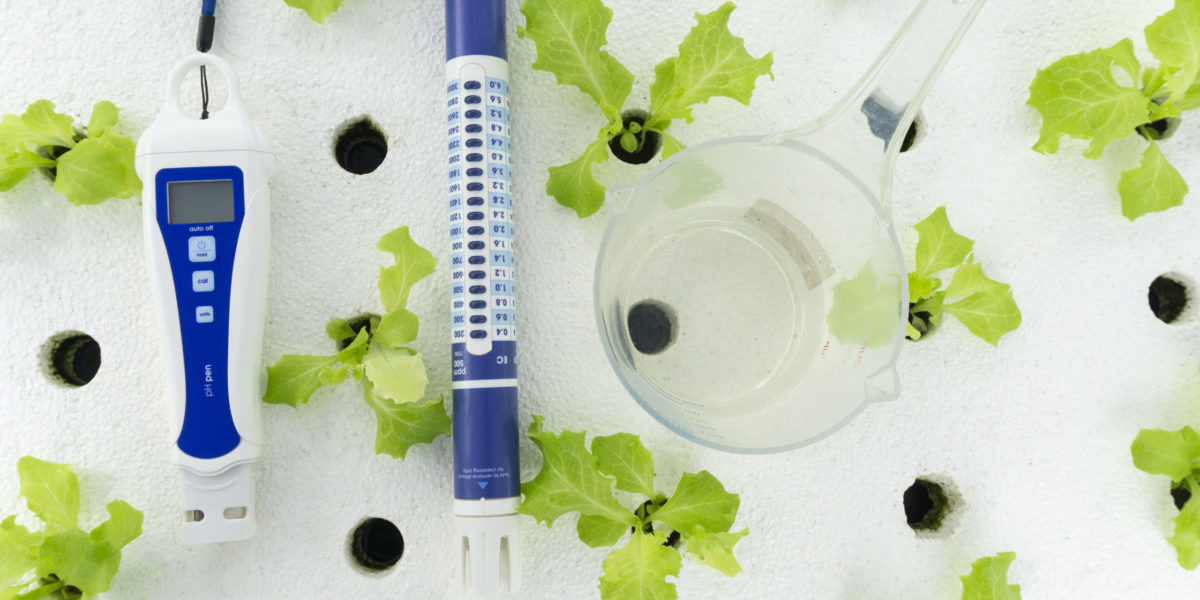
"The Main Methods of Hydroponics" from www.btlliners.com and used with no modifications.
Have you ever wondered how you could grow plants without soil? Enter the world of hydroponics, a fascinating method that lets you cultivate lush gardens using water. This innovative technique has been around for centuries, and it's gaining popularity among gardeners who want more control over their plants' growth.
Hydroponics is the art of growing plants using nutrient-rich water instead of soil. In this method, plant roots are submerged in a water-based nutrient solution, which provides all the essential minerals they need to thrive. This way, plants can grow faster and healthier because they receive direct access to nutrients without the barriers soil might pose.
The roots of hydroponics can be traced back to the Hanging Gardens of Babylon, one of the Seven Wonders of the Ancient World. However, the modern version of hydroponics began to take shape in the 20th century. Scientists discovered that plants could absorb essential nutrients through water, leading to the development of various hydroponic systems.
Over the years, hydroponics has evolved into a sophisticated method that allows for precise control over the growing environment. Today, it's used in both small-scale home gardens and large commercial operations to produce everything from leafy greens to juicy tomatoes.
Why choose hydroponics over traditional soil gardening? Here are some compelling reasons:
Most importantly, hydroponics empowers you to grow fresh, healthy produce year-round, regardless of the weather outside.

"Basic Principles of Hydroponics - Grow ..." from zipgrow.com and used with no modifications.
Understanding the core principles of hydroponics is essential for setting up a successful system. At its heart, hydroponics relies on three main components: nutrient delivery, water and oxygen, and environmental control.
"Hydroponics allows for the precise control of nutrients and environmental factors, leading to optimal plant growth and higher yields." - Gardening Expert
In hydroponics, nutrient delivery is key. Plants receive a balanced mix of essential nutrients dissolved in water. These nutrients include nitrogen, phosphorus, potassium, and trace elements like iron and magnesium. The nutrient solution is carefully formulated to meet the specific needs of the plants you're growing.
There are different methods to deliver these nutrients, each with its own advantages. For example, in Deep Water Culture (DWC), plants are suspended in a nutrient solution, while in the Nutrient Film Technique (NFT), a thin film of nutrient solution flows over the roots.
Water is the lifeblood of hydroponics, but it's not just about keeping the roots wet. Oxygen is equally important. In hydroponic systems, roots need access to oxygen to thrive. This is why aeration, or adding air to the water, is crucial. Without sufficient oxygen, roots can suffocate, leading to poor plant health.
Therefore, many hydroponic systems incorporate air pumps or bubblers to ensure that roots receive the oxygen they need. This careful balance of water and oxygen is what sets hydroponics apart from traditional gardening.
"Can aeroponics be the answer to disease ..." from www.potatonewstoday.com and used with no modifications.
Aeroponics is a cutting-edge hydroponic method where plant roots are suspended in the air and misted with a nutrient solution. This system offers a unique advantage: it maximizes oxygen exposure to the roots, promoting rapid growth and robust health.
Unlike other hydroponic systems, aeroponics requires precise control over the misting process to ensure roots receive adequate nutrients and moisture. This method can yield impressive results, making it popular among advanced gardeners and commercial growers.
However, the setup can be more complex and costly compared to other systems. It requires specialized equipment to maintain the fine mist and prevent clogs. But for those willing to invest, the rewards can be substantial.
"In aeroponics, plants grow faster and require less space, making it ideal for urban farming." - Urban Gardening Enthusiast

"The hydroponic drip system - Structure ..." from hydroplanner.com and used with no modifications.
Drip systems are among the most versatile and widely used hydroponic methods. In these systems, nutrient solution is delivered directly to the base of each plant through a network of tubes and emitters. This targeted approach minimizes water waste and ensures each plant receives the right amount of nutrients.
Drip systems can be tailored to fit any scale, from small home setups to large commercial operations. They are particularly useful for growing a wide variety of plants, including fruits, vegetables, and herbs.
"With drip systems, you can grow almost anything, from strawberries to peppers, all with minimal water use." - Hydroponic Farmer
One challenge with drip systems is managing the buildup of salts and nutrients, which can clog the emitters. Regular maintenance and cleaning are essential to keep the system running smoothly.

"Ebb & Flow (Flood and Drain) Hydroponic ..." from www.trees.com and used with no modifications.
The ebb and flow system, also known as flood and drain, involves periodically flooding the grow tray with nutrient solution and then allowing it to drain back into the reservoir. This cycle provides plants with nutrients and oxygen while preventing root rot.
This method is simple and effective, making it a favorite among beginners. It's suitable for a wide range of plants, including leafy greens and flowering plants. However, it requires careful monitoring to ensure the flooding and draining cycles are timed correctly.
Setting up a hydroponic system may seem daunting at first, but with the right guidance, you can create a thriving garden. Whether you're a beginner or an experienced gardener, understanding the essentials is crucial for success.
To start your hydroponic journey, you'll need some basic equipment and materials. Here's a list to get you started:
Besides that, you'll need a suitable growing medium like clay pebbles or coconut coir to support the plants.
"A basic hydroponic setup can cost between $50 to $500, depending on the size and complexity." - Hydroponic Retailer
Now, let's dive into setting up your hydroponic system step by step:
As you embark on your hydroponic adventure, here are some common pitfalls to watch out for:
Choosing the right plants is crucial for a successful hydroponic garden. While many plants can thrive in hydroponic systems, some are better suited for beginners and offer high yields.
"Lettuce, spinach, and herbs like basil and mint are perfect for hydroponics, especially for those just starting out." - Hydroponic Specialist
These plants are not only easy to grow but also mature quickly, providing a rewarding experience for new gardeners.
For those looking for a challenge, tomatoes, cucumbers, and peppers can also be grown hydroponically. These plants require more attention and space, but the results can be incredibly satisfying.
If you're new to hydroponics, start with plants that are forgiving and easy to manage. Leafy greens like lettuce and spinach are excellent choices because they grow quickly and require minimal maintenance.
Herbs such as basil, cilantro, and parsley are also beginner-friendly and can be harvested multiple times, providing fresh flavors for your kitchen.
For those aiming for high yields and fast growth, consider plants like strawberries and radishes. These plants can produce bountiful harvests in a short period, making them ideal for hydroponic systems.
Additionally, try growing kale and Swiss chard for a nutritious and abundant supply of greens throughout the year.

"Hydroponic System Maintenance and ..." from www.agrowtronics.com and used with no modifications.
Maintaining your hydroponic system is crucial for keeping your plants healthy and productive. Regular system checks, nutrient adjustments, and monitoring for pests and diseases are all part of the process.
By following these guidelines and staying vigilant, you can enjoy a thriving hydroponic garden that provides fresh produce and satisfaction.
Keeping your hydroponic system in top shape requires regular monitoring and maintenance. Just like a car needs regular oil changes and tune-ups, your hydroponic garden needs routine checks to ensure everything runs smoothly.
Start by checking the pH levels of your nutrient solution. This is crucial because pH affects nutrient absorption. Most plants thrive in a pH range of 5.5 to 6.5. Use a pH meter to test your solution regularly, and adjust it using pH up or down solutions if necessary.
Besides pH, monitor the electrical conductivity (EC) of your solution. EC measures the concentration of nutrients in the water. If it's too high, it can cause nutrient burn, while too low can lead to deficiencies. Keep an eye on this to maintain a balanced nutrient solution.
Nutrient deficiencies can manifest as yellowing leaves, stunted growth, or poor fruit development. If you notice these signs, it's essential to act quickly. First, ensure that your nutrient solution is correctly mixed and that pH levels are within the optimal range. Adjusting these can often solve the problem.
If deficiencies persist, consider adding specific nutrients to address the issue. For example, yellowing leaves might indicate a lack of nitrogen, while poor fruit development could suggest a potassium deficiency.
Even in a controlled environment like hydroponics, pests and diseases can still find their way to your plants. The key is to act swiftly at the first sign of trouble. Regularly inspect your plants for any signs of pests, such as aphids or spider mites, which can be removed manually or with organic insecticides.
For diseases, ensure good airflow around your plants to prevent mold and mildew. If you spot any signs of disease, remove affected leaves or plants immediately to prevent the spread. Keeping your system clean and free from debris will also help reduce the risk of disease. To learn more about maintaining a healthy hydroponic setup, explore how hydroponics works.

"The Future of Farming: Hydroponics — PSCI" from psci.princeton.edu and used with no modifications.
Hydroponics is not just a trend; it's a revolutionary way to grow plants that could reshape agriculture as we know it. By offering a sustainable, efficient, and productive alternative to traditional soil gardening, hydroponics empowers gardeners and farmers alike to produce fresh, healthy food with minimal environmental impact.
"Hydroponics allows for precise control over nutrients and growing conditions, leading to faster growth and higher yields." - Gardening Expert
We've explored the basics of hydroponics, including its history, benefits, and core principles. From understanding nutrient delivery systems to setting up your own hydroponic garden, the knowledge you've gained here can help you start your journey into this innovative method of gardening.
Remember, regular maintenance and monitoring are key to a successful hydroponic system. By keeping an eye on pH levels, nutrient concentrations, and potential pests or diseases, you can ensure your plants remain healthy and productive.
The future of hydroponics looks promising, with advancements in technology paving the way for even more efficient systems. Vertical farming, where plants are grown in stacked layers, is gaining traction in urban areas, allowing for maximum yield in minimal space.
Moreover, automation and smart technology are making hydroponics more accessible to hobbyists and commercial growers alike. Imagine a system that automatically adjusts nutrient levels and environmental conditions based on real-time data. These innovations are not just dreams—they are becoming reality.
To wrap up, let's address some common questions about hydroponics that you might have.
The cost of setting up a hydroponic system can vary widely depending on the size and complexity. A basic setup for beginners can range from $50 to $200, while more advanced systems can cost upwards of $500 or more. It's important to consider your budget and the scale of your garden when planning your setup.
Hydroponic systems are incredibly water-efficient, using up to 90% less water than traditional soil gardening. This is because the water in hydroponics is recirculated, meaning very little is wasted. This efficiency makes hydroponics an excellent choice for areas with limited water resources.
Yes, hydroponic plants can be just as nutritious, if not more so, than soil-grown plants. Because you have control over the nutrient solution, you can ensure that plants receive all the essential minerals they need for optimal growth. This can result in produce that is rich in vitamins and minerals.
The pH level of your nutrient solution is crucial because it affects the availability of nutrients to your plants. If the pH is too high or too low, plants may not be able to absorb certain nutrients, leading to deficiencies. Regularly monitoring and adjusting pH levels is key to maintaining a healthy hydroponic system.
While many plants can thrive in hydroponic systems, some are better suited than others. Leafy greens, herbs, and certain fruits like strawberries are excellent choices for hydroponics. However, large root vegetables and certain fruit trees may not be ideal due to space and nutrient requirements.
In conclusion, hydroponics offers a versatile and sustainable method of gardening that can be tailored to fit various needs and environments. With the knowledge and insights shared in this article, you're well-equipped to start your own hydroponic journey and reap the benefits of this innovative growing technique.
Hydroponics is a method of growing plants without soil, using mineral nutrient solutions in a water solvent. This innovative technique allows for precise control over growing conditions, making it possible to cultivate plants in environments where traditional agriculture would be challenging. For those interested in learning more about this method, hydroponic systems offer a fascinating alternative to soil-based gardening.